*NURSING > QUESTIONS & ANSWERS > PHTLS Pre & Post Test Answered; 100% Answered correct. 77 QUESTIONS and Answers. (All)
PHTLS Pre & Post Test Answered; 100% Answered correct. 77 QUESTIONS and Answers.
Document Content and Description Below
PHTLS Pre & Post Test Answered; 100% Answered correct. 77 QUESTIONS and Answers. 1. The displacement of tissue away from the path of a projectile, both temporarily and permanently, is known as: A.... Conization B. Cavitation C. Crepitation D. Contusion - CORRECT Ans-B. Cavitation 2. The single most important factor in determining the potential for injury due to energy exchange is: A. Mass of the bodies involved B. Velocity of the bodies involved C. Density of the tissues involved D. Surface area of the impact involved - CORRECT Ans-B. Velocity of the bodies involved 3. In the management of shock, isotonic crystalloid solutions, such as Ringer's, are preferred because: A. The protein molecules in crystalloid solutions act as volume expanders B. These fluids draw interstitial fluid into the vascular space to enhance volume C. These solutions will stay in the vascular space longer than water solutions, such as D5W D. Their pH enhance oxygen delivery to the tissues - CORRECT Ans-C. These solutions will stay in the vascular space longer than water solutions, such as D5W 4. With respect to the distance of a fall, which of the following is a guideline for determining a critical fall? A. 3 times the height of the patientB. 2 times the height of the patient C. 5 times the height of the patient D. 1 ½ times the height of the patient - CORRECT Ans-A. 3 times the height of the patient 5. The phase of an explosion, or blast, in which hollow organs are squeezed and may rupture is called the __________ phase. A. Tertiary phase B. Quaternary phase C. Secondary phase D. Primary phase - CORRECT Ans-D. Primary phase 6. During the primary survey and management of a trauma patient, the E in ABCDE stands for _________? A. Edema B. Eyes & ears C. Expose/Environment D. Electrical therapy - CORRECT Ans-C. Expose/Environment 7. The time in which surgical intervention can make a difference in patient outcome is the __________? A. Golden period B. Golden time C. Golden era D. Golden minutes - CORRECT Ans-A. Golden period (hour) 8. In the absence of extenuating circumstances, the maximum amount of time it should take to identify and manage immediate threats to life, prepare the patient for transport and begin transport is _________? A. 5 minutes B. 10 minutes C. 15 minutesD. 30 minutes - CORRECT Ans-B. 10 minutes [Show More]
Last updated: 1 year ago
Preview 1 out of 19 pages
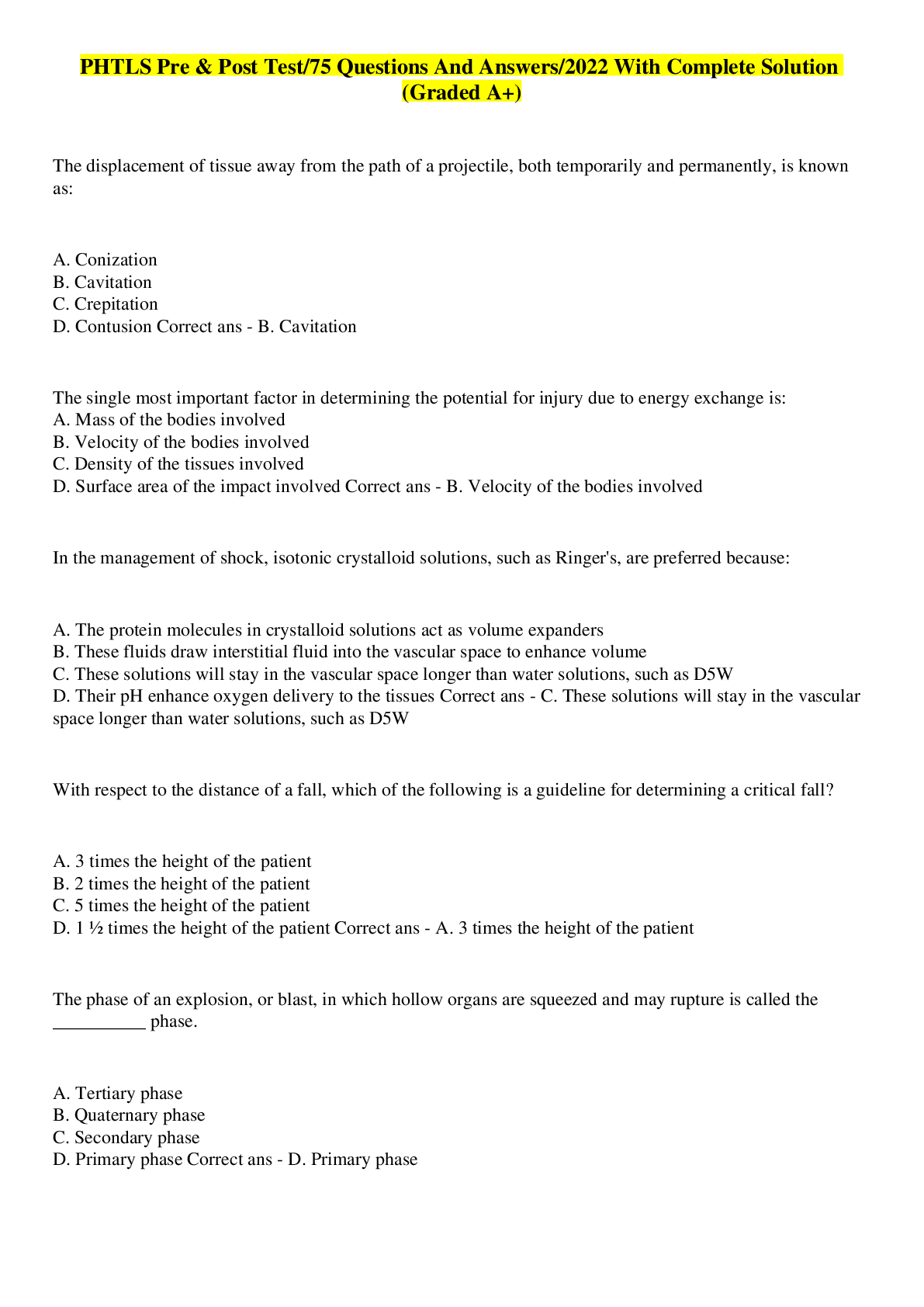
Reviews( 0 )
Document information
Connected school, study & course
About the document
Uploaded On
Jun 13, 2022
Number of pages
19
Written in
Additional information
This document has been written for:
Uploaded
Jun 13, 2022
Downloads
0
Views
152


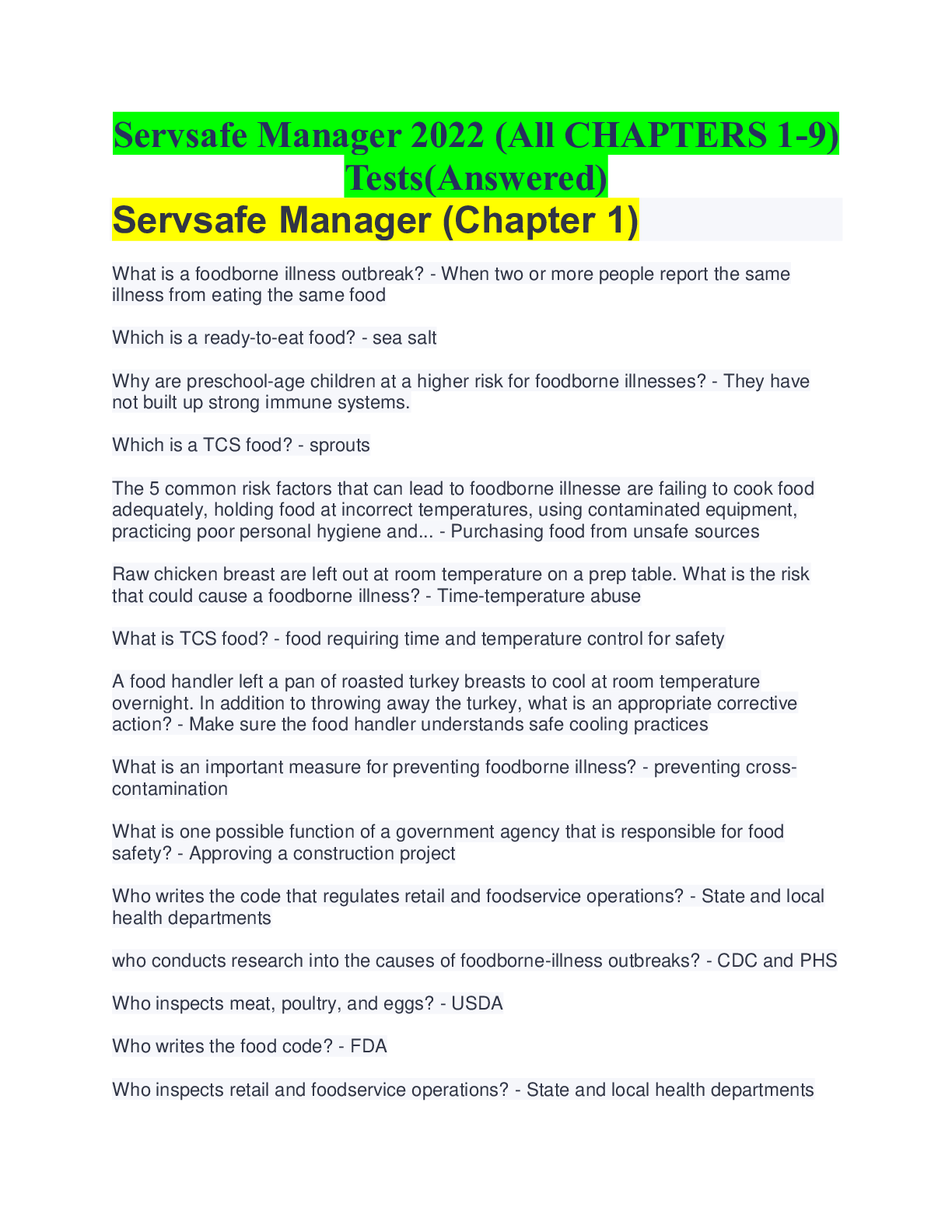
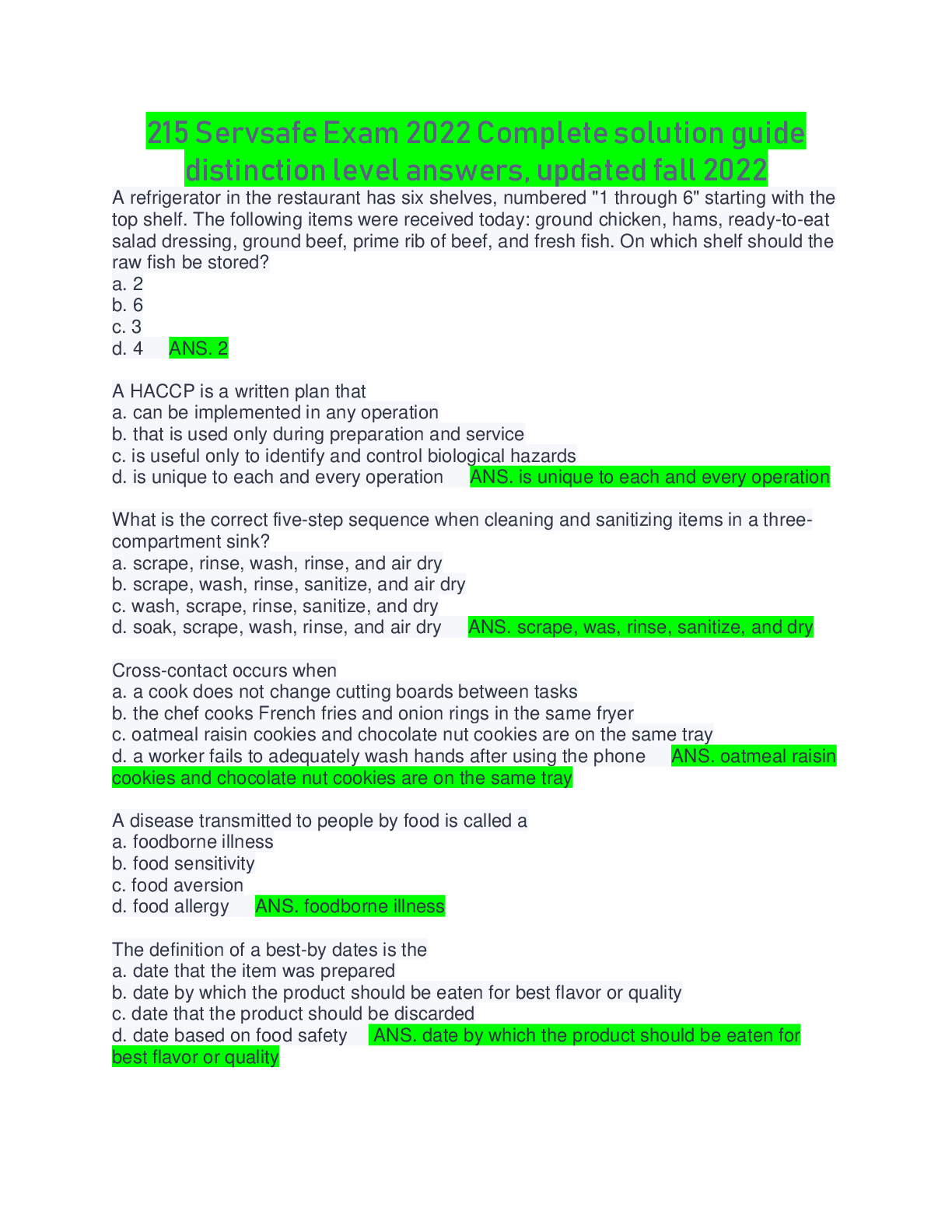
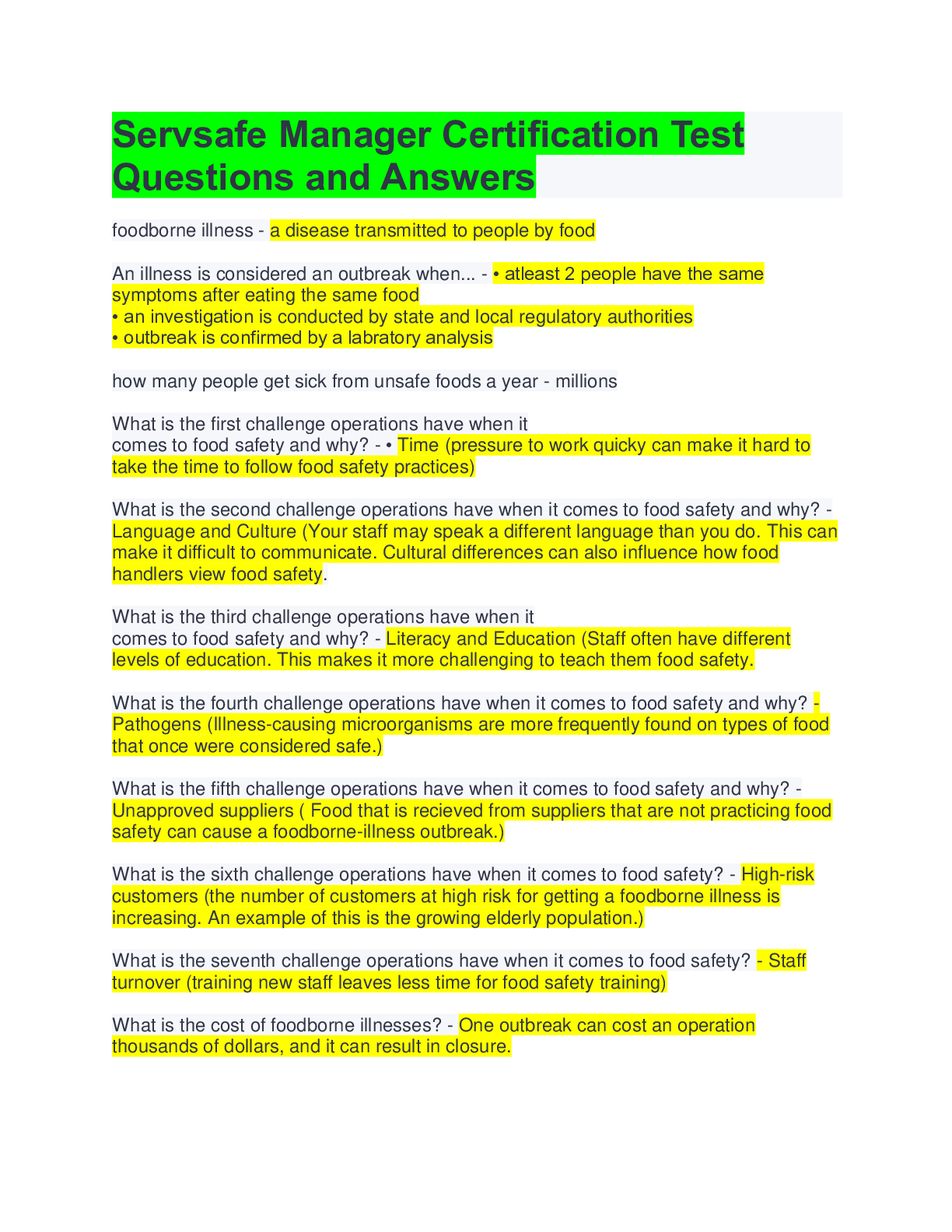
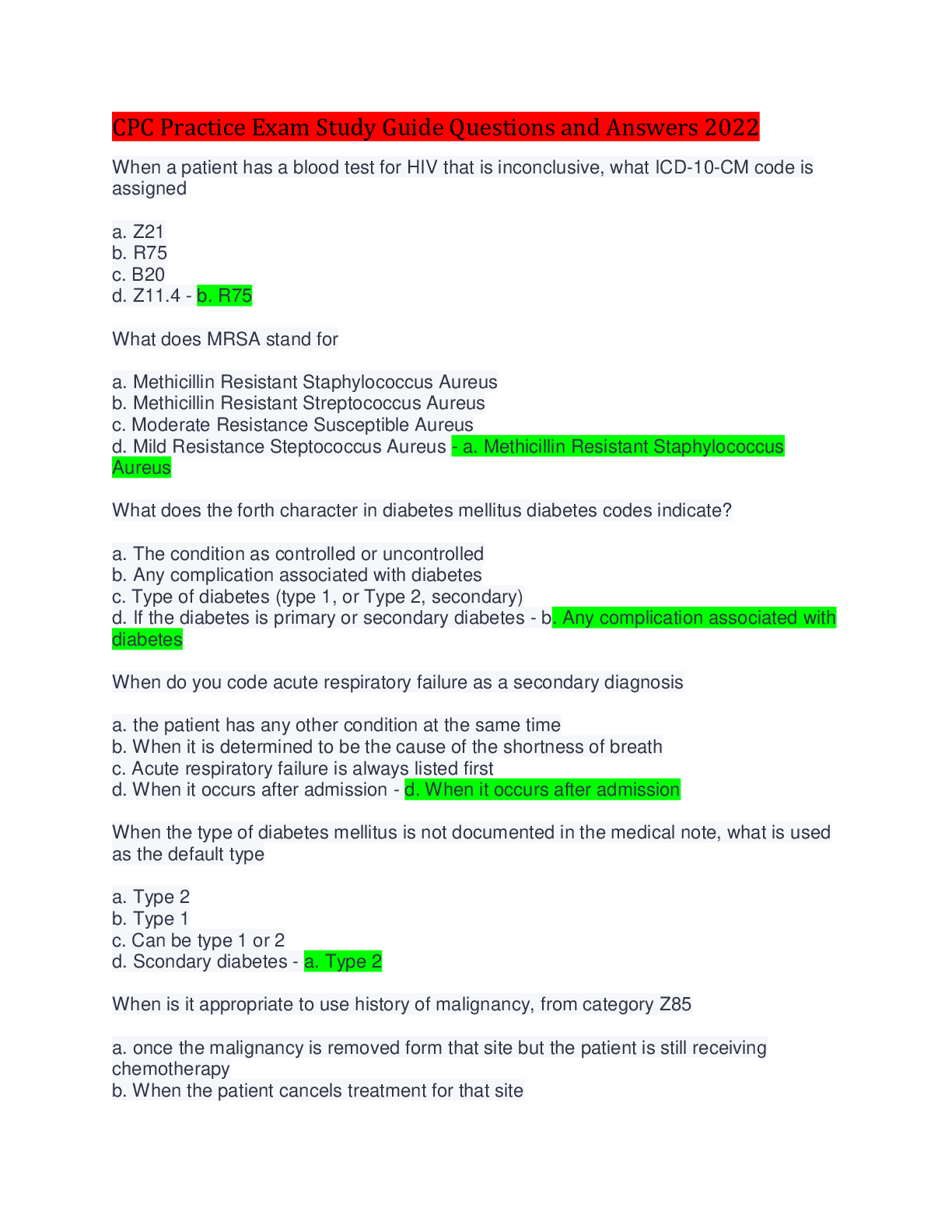
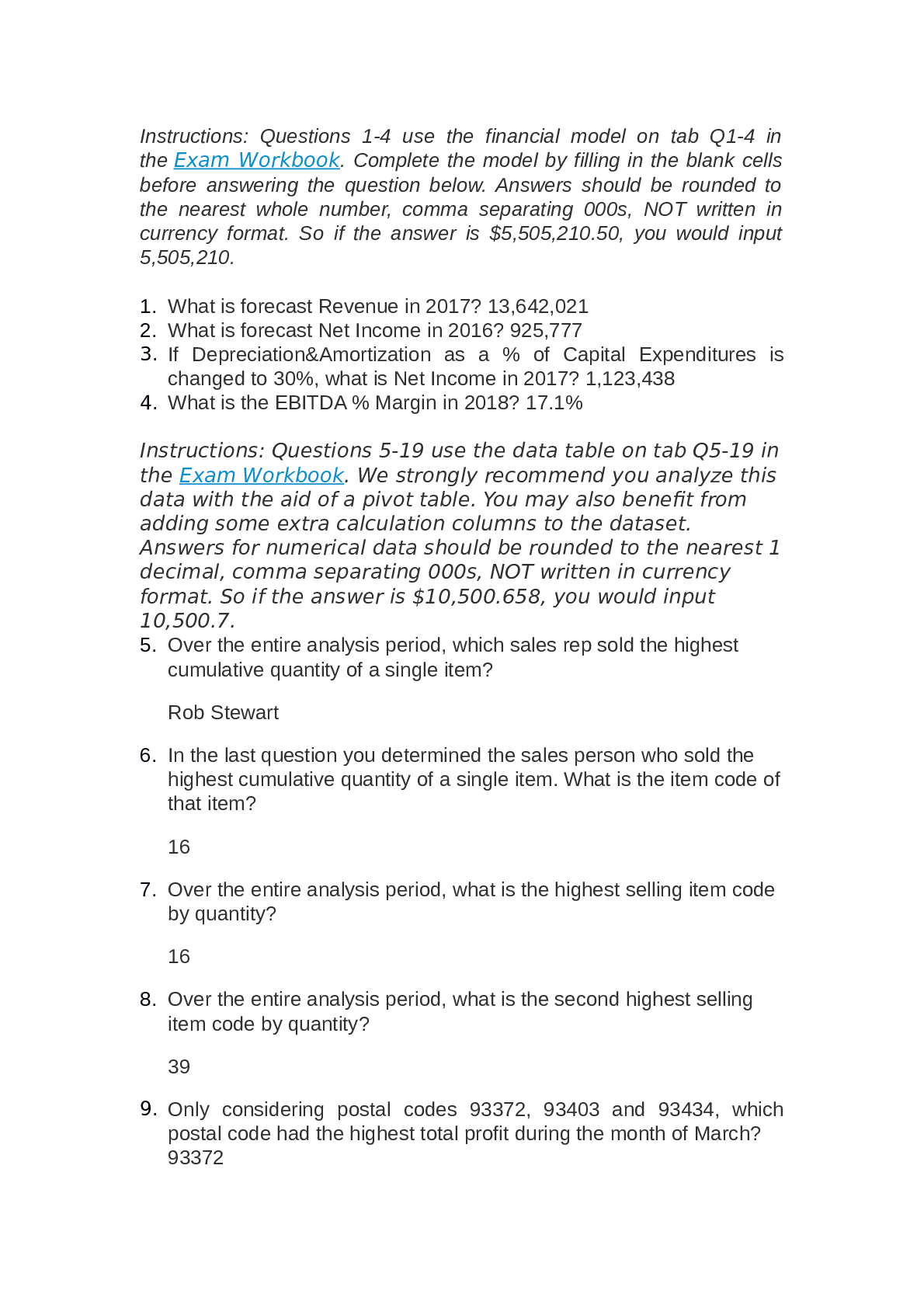
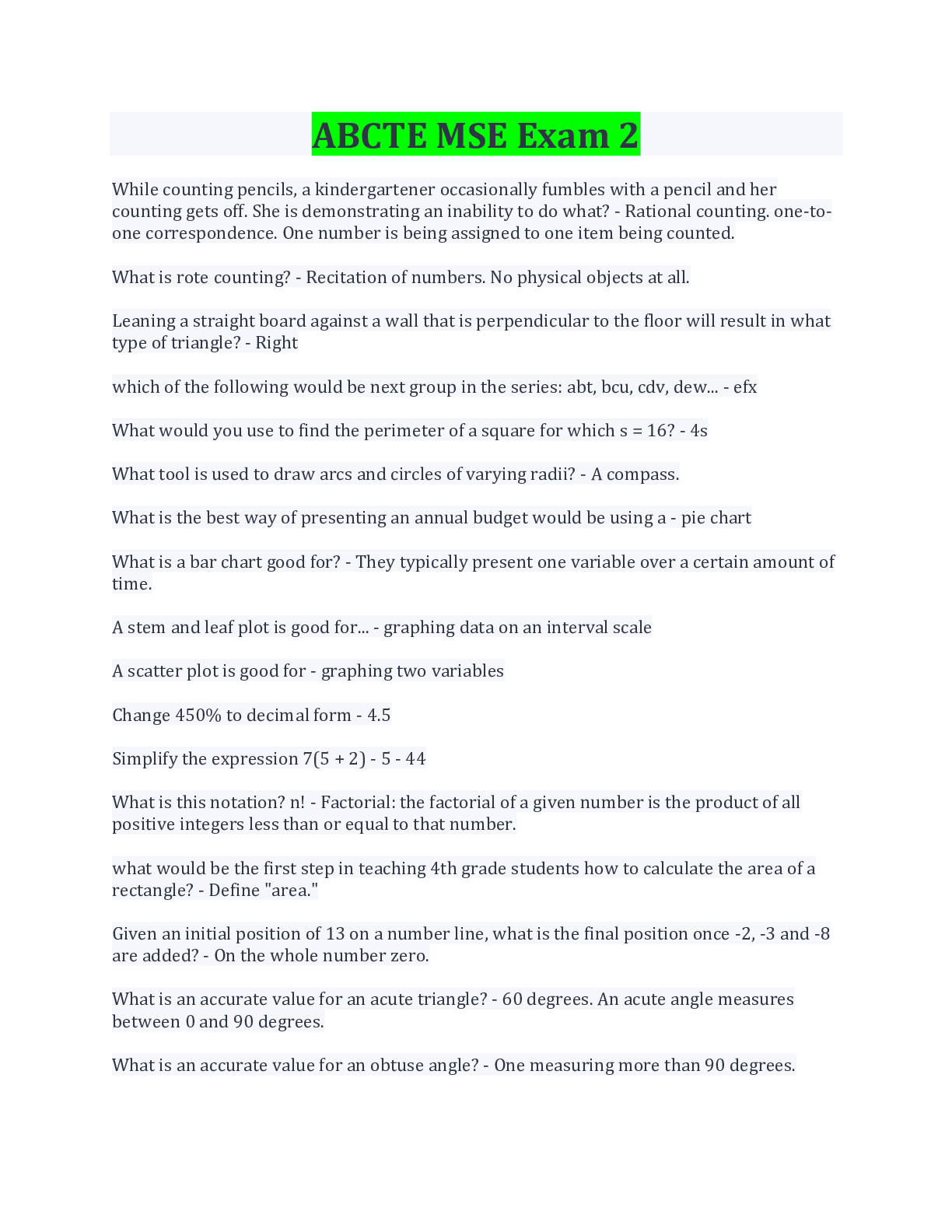
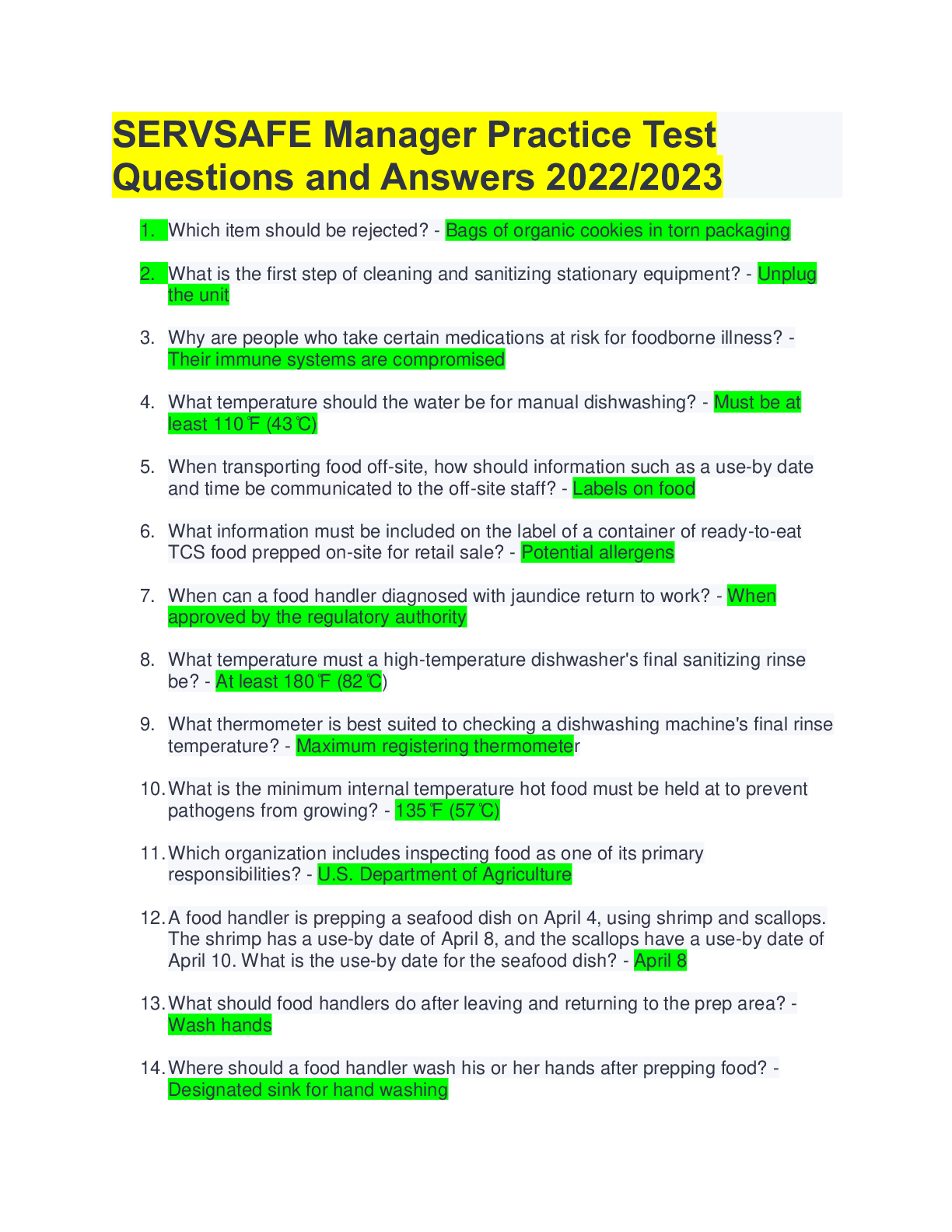

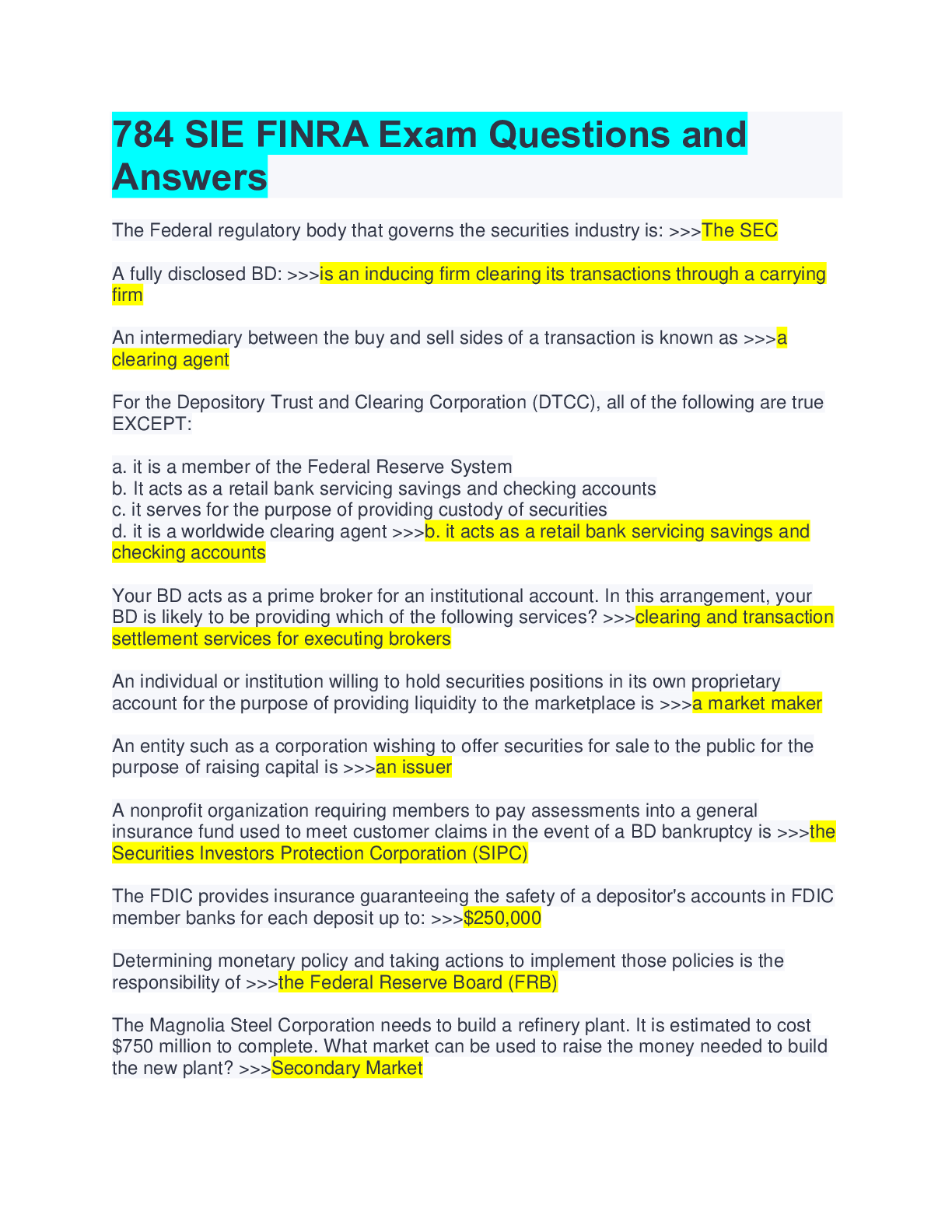
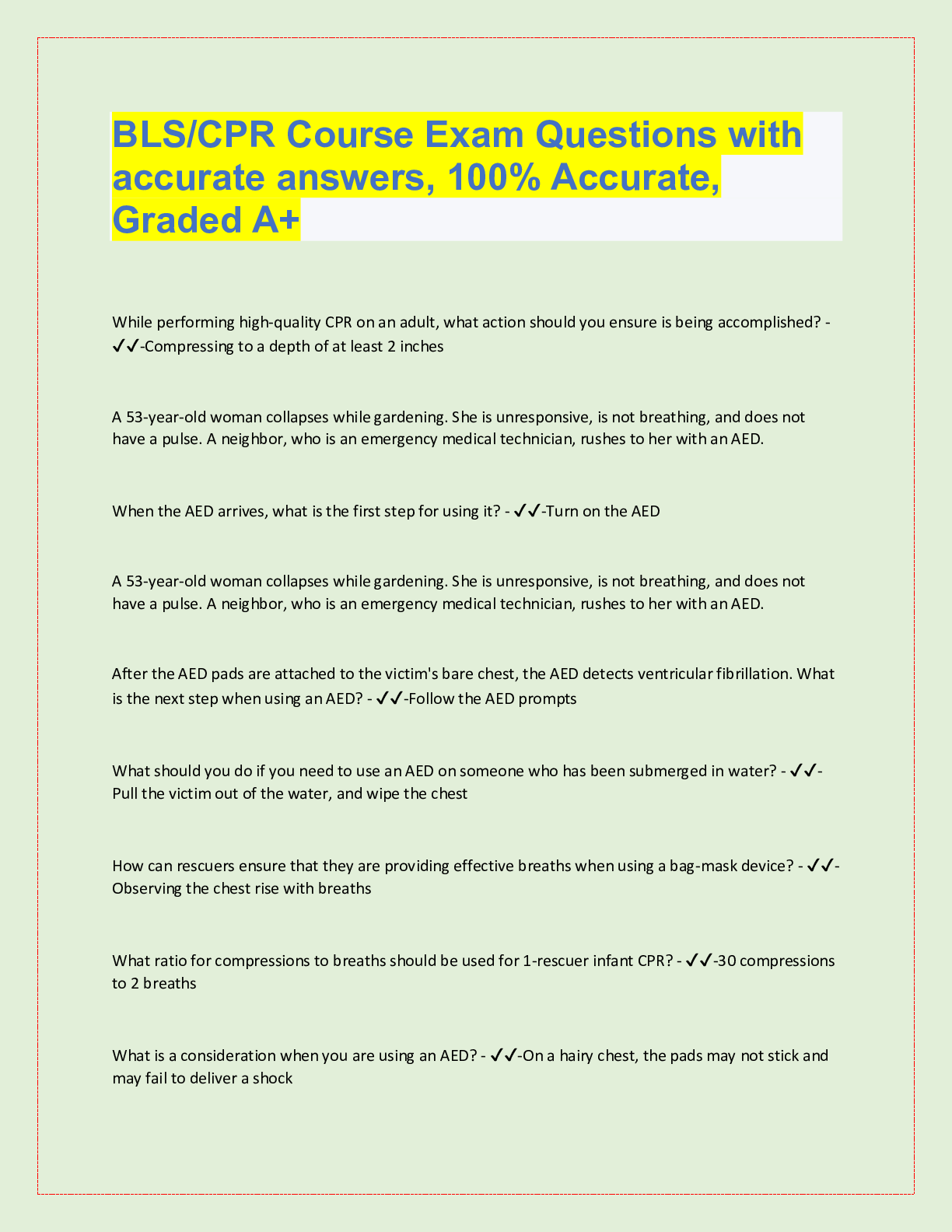
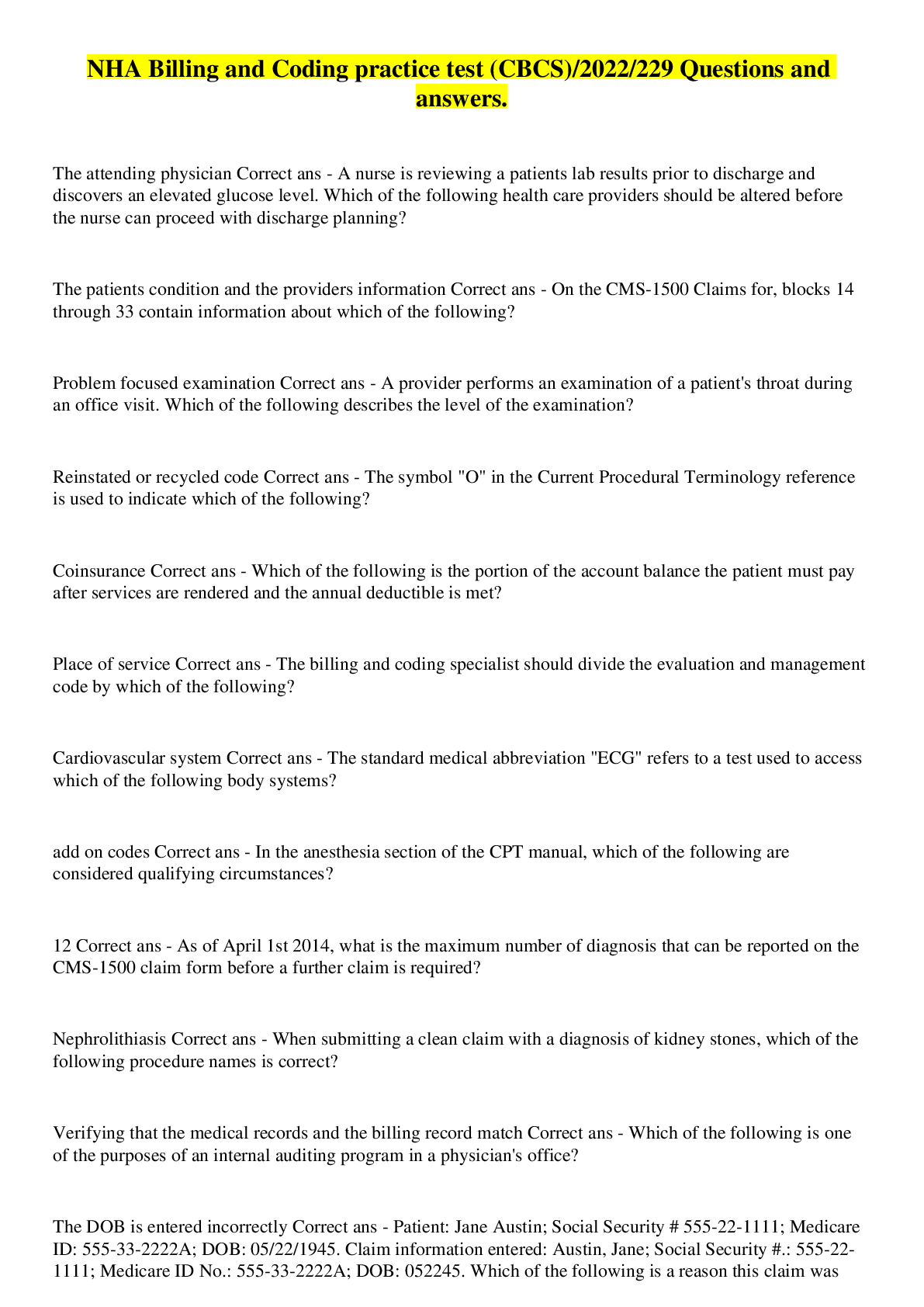
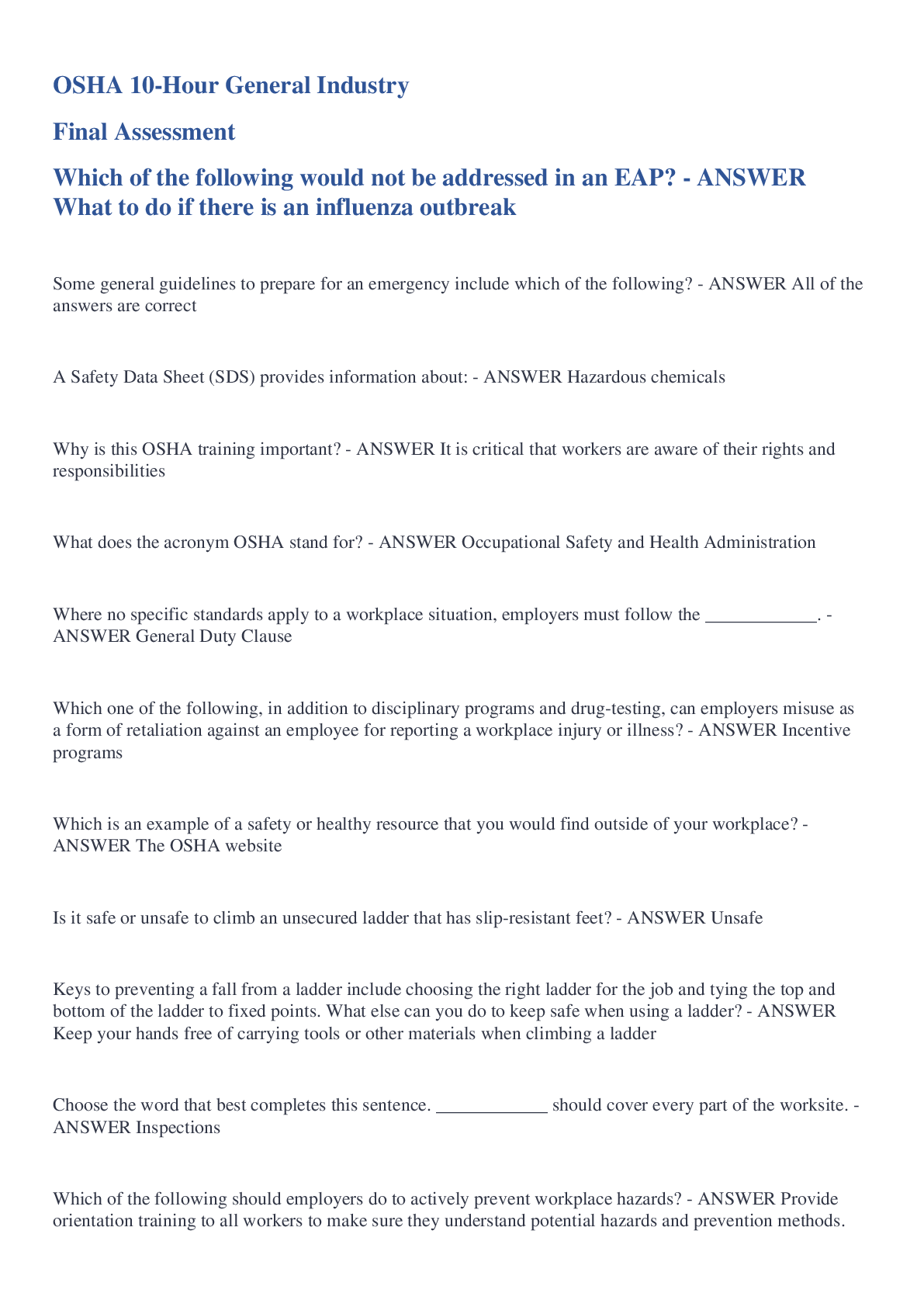

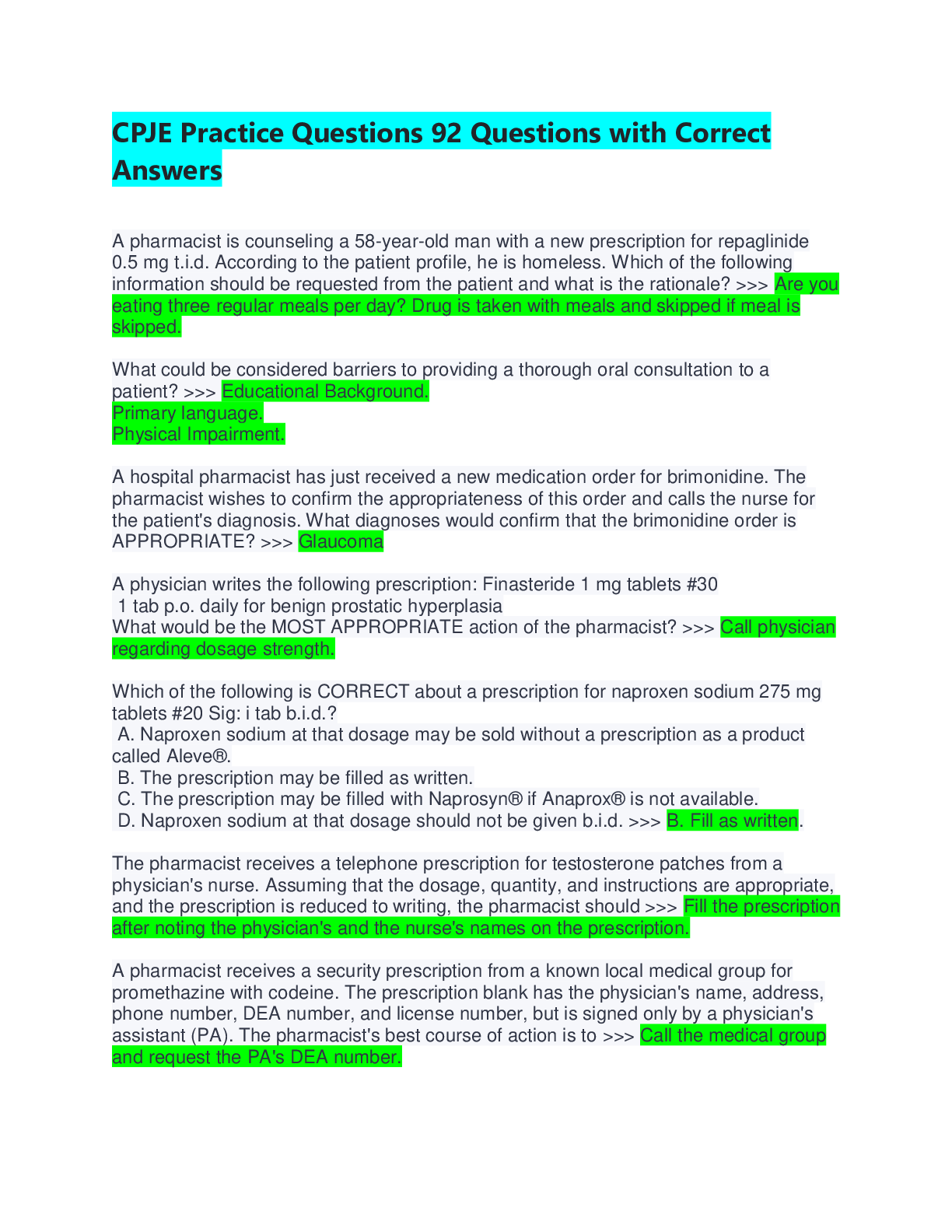
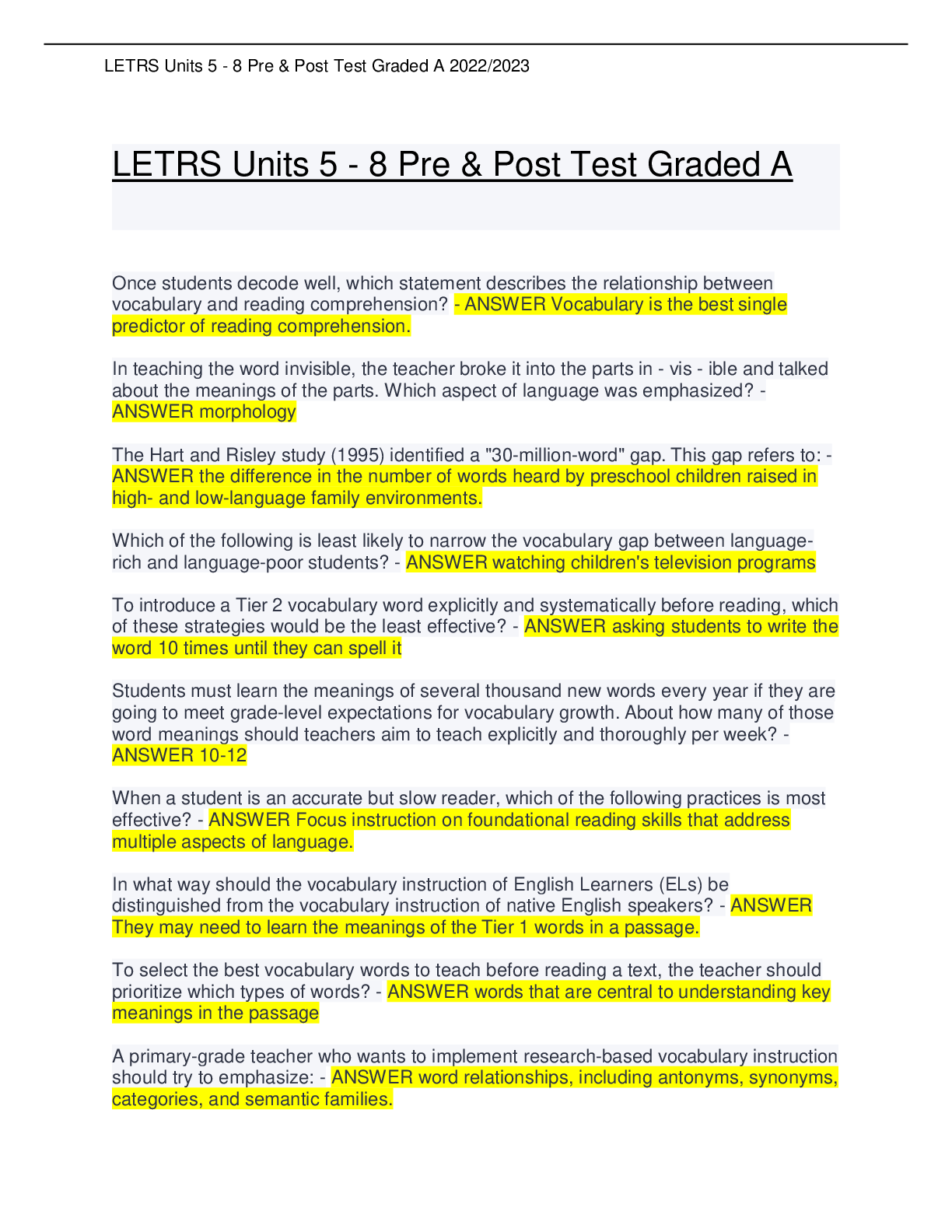
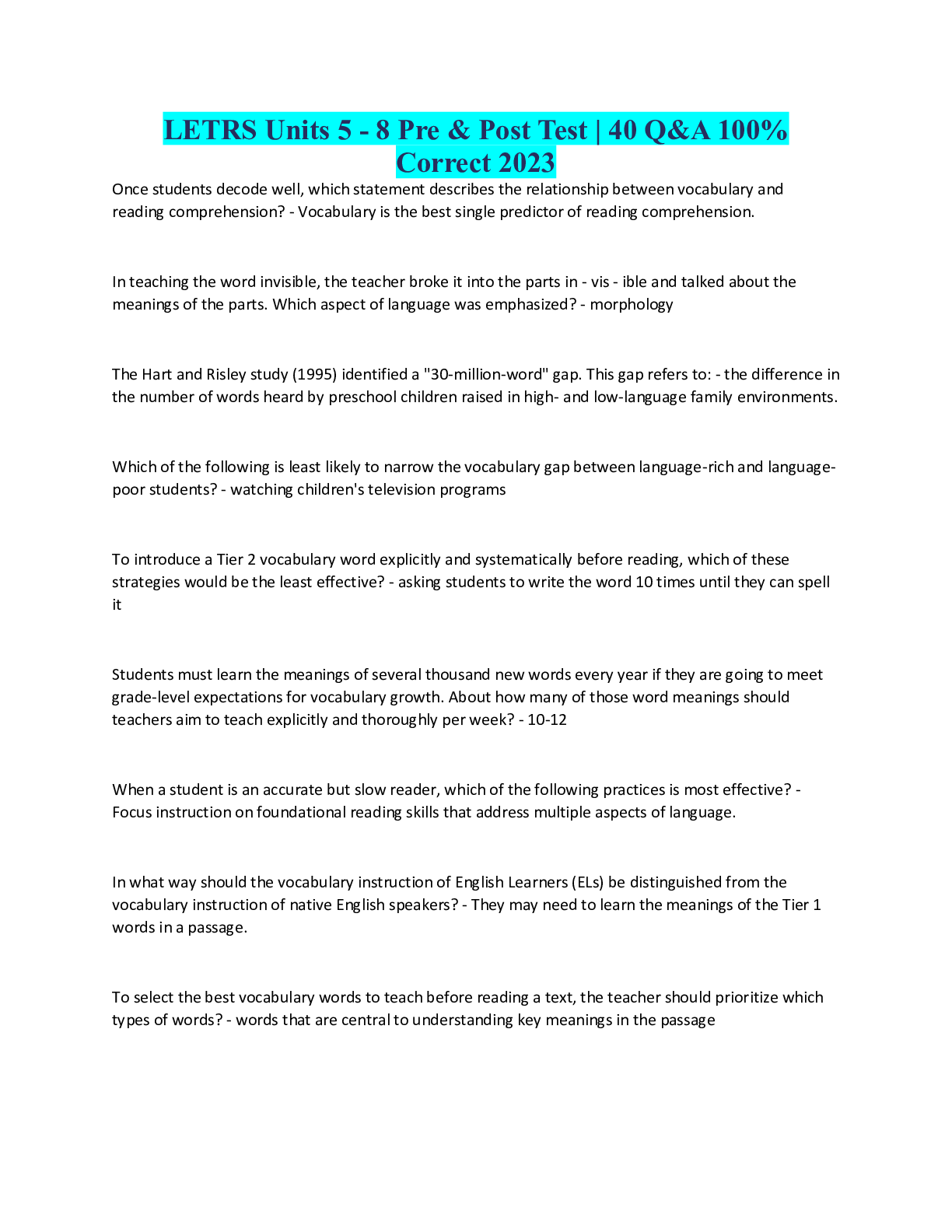
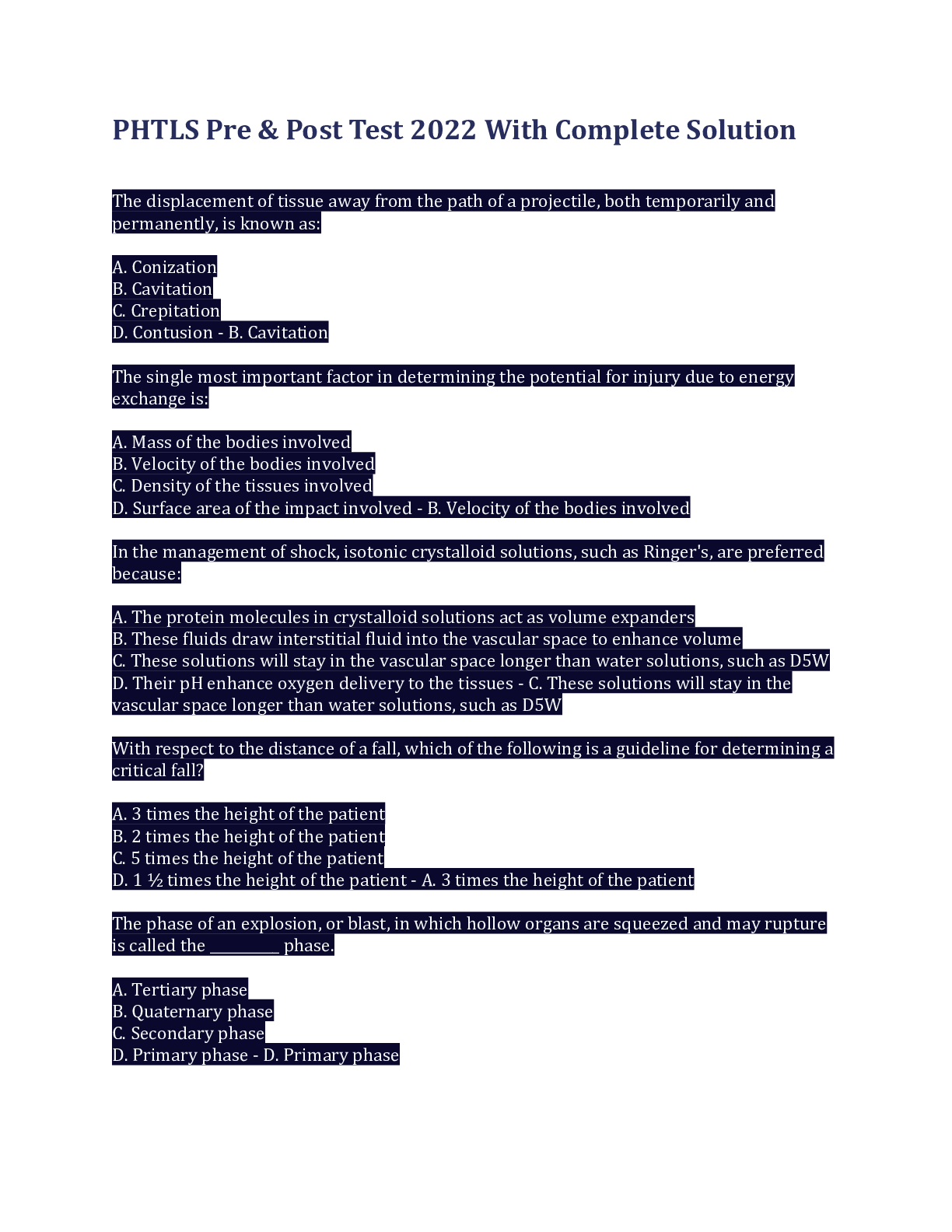
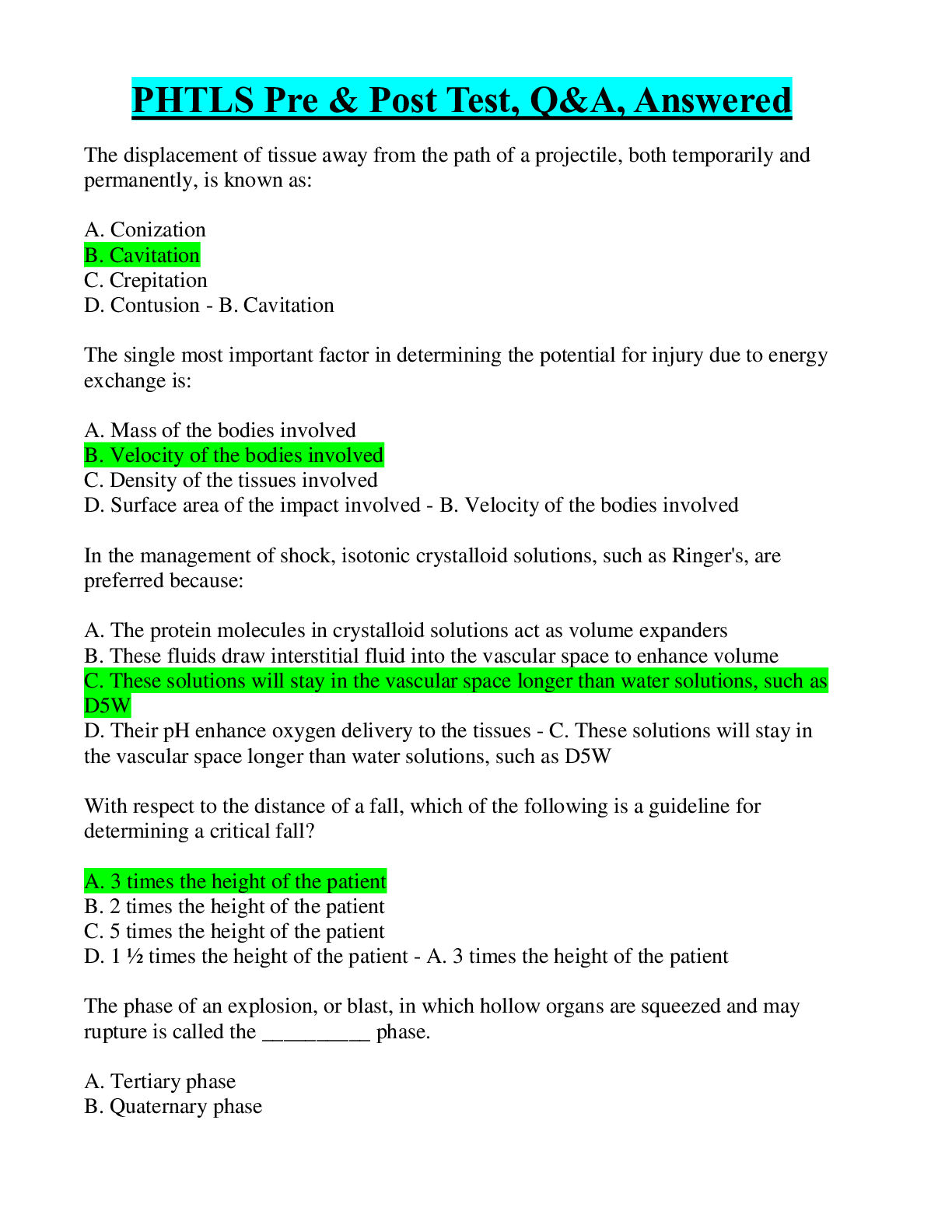
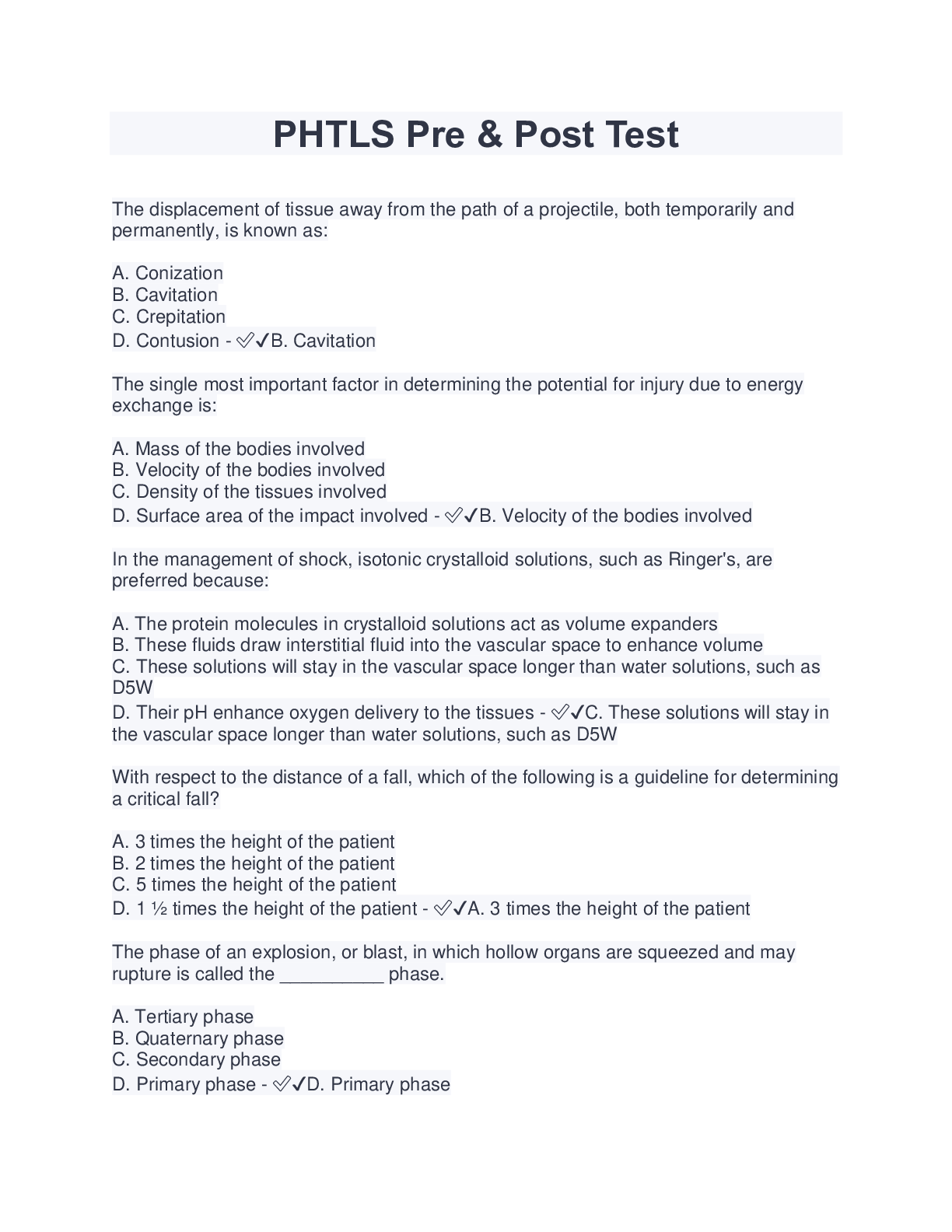

.png)
.png)
 latest update.png)


.png)

